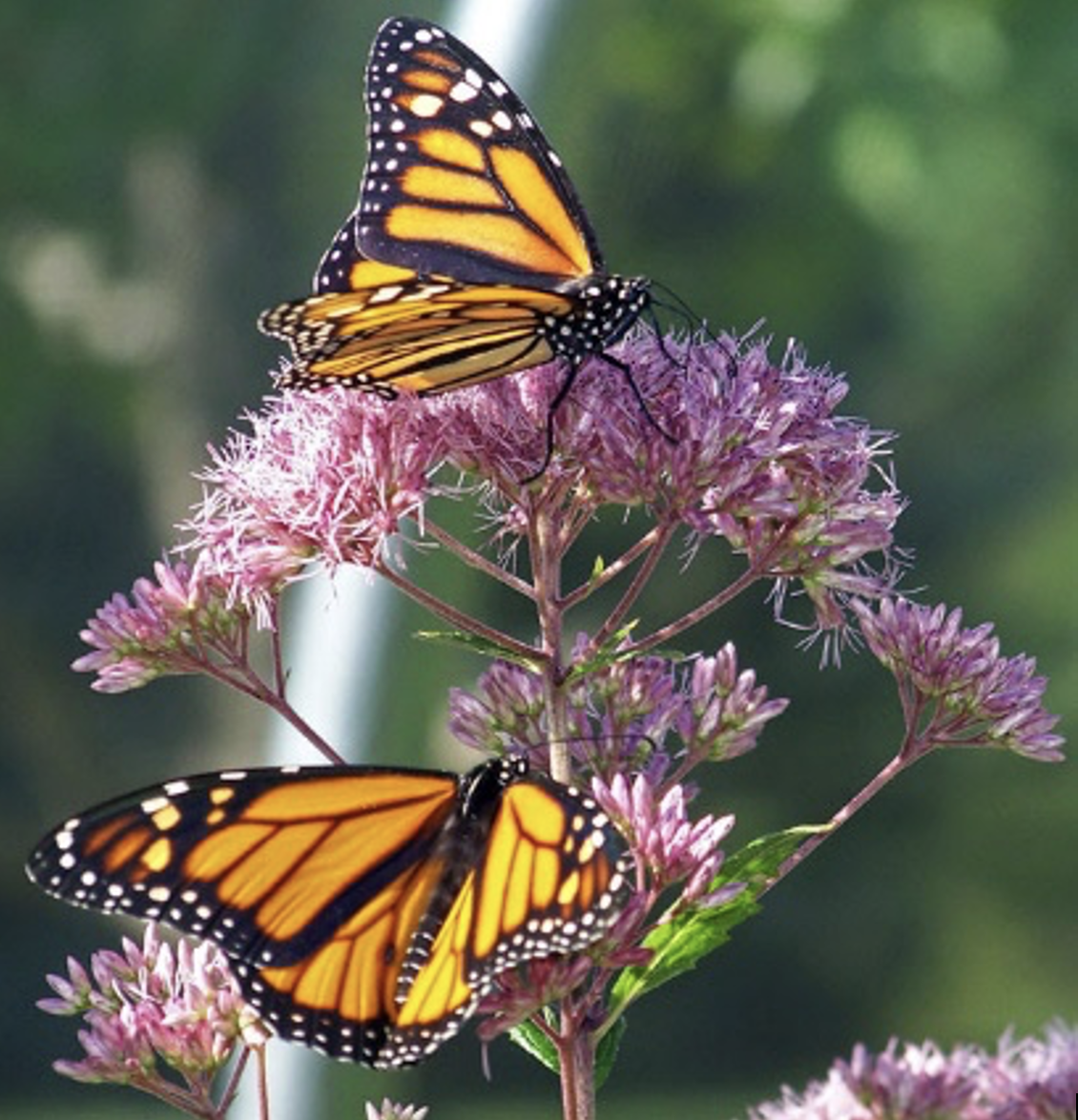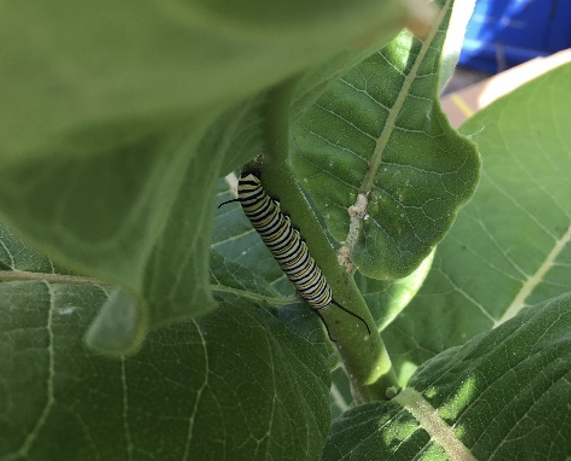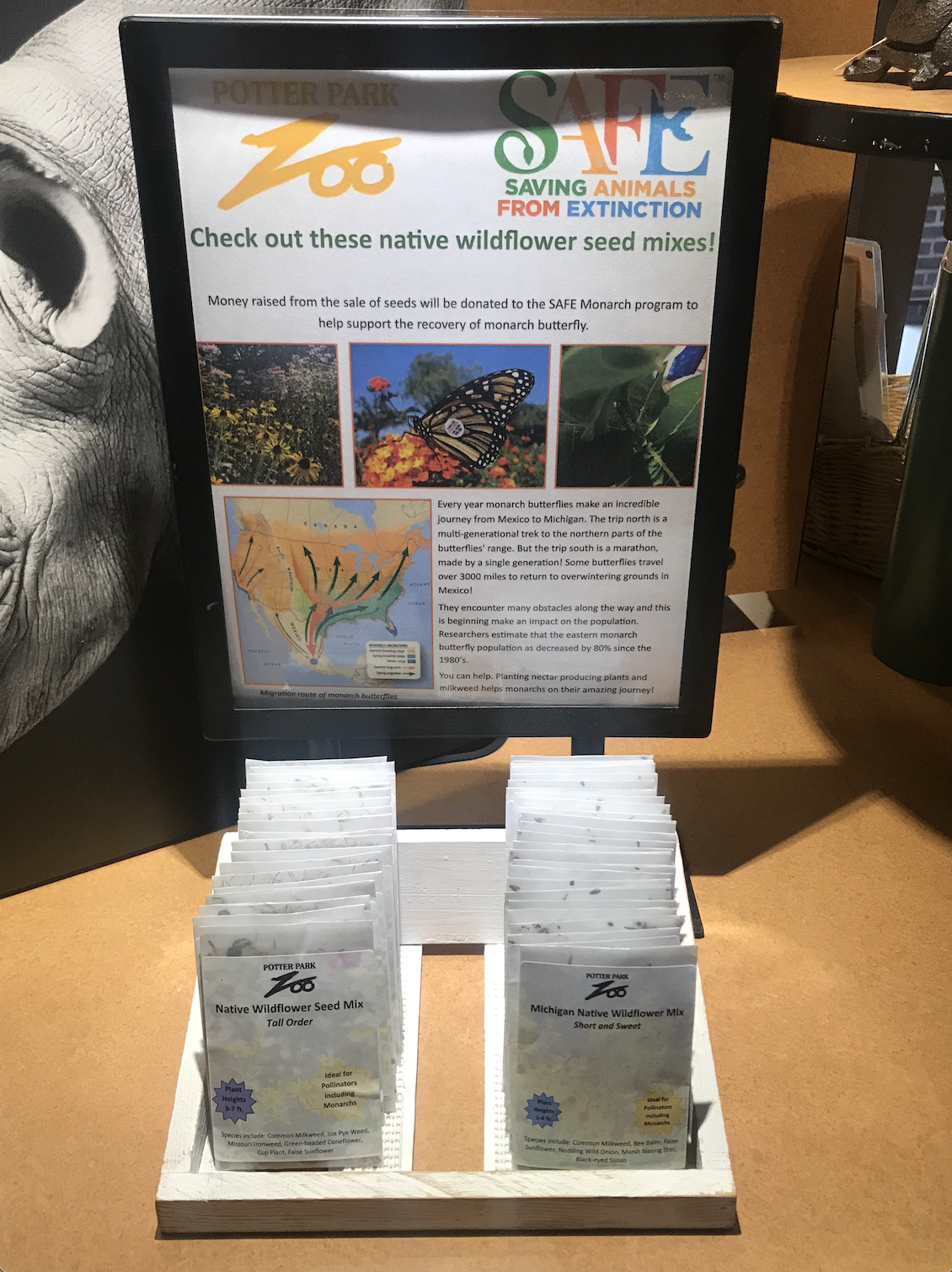If someone asked you to name a kind of butterfly, which species comes to mind first? Is it the monarch butterfly? Regal in its black, orange and white, the monarch butterfly is one of the most recognizable insects in the world. 
In the fall, monarch butterflies make an amazing migration. It’s not some short little jaunt over state lines. Some monarch butterflies will travel over 3,000 miles to get to Mexico and southern California. They migrate in such large groups that they can be detected on weather radar.
In the US, we have two sub-species of monarch butterflies. The eastern monarch population lives east of the Rocky Mountains and overwinter in a mountainous area of western Mexico. The western monarch population is found west of the Rockies and migrates to southern California.
Each winter researchers try to count how many monarch butterflies make it to their winter habitat. This census is a good indicator of the overall health of the population. Recent counts have revealed troubling information. The eastern population in Mexico is only at about 20 percent of what it was in the 1980’s. The western population is struggling even more, with only one percent of the number of butterflies in the wintering grounds when compared to the population of the 1980s. Where have all the monarchs gone?
To understand this, we have to know a little more about the life cycle of a monarch butterfly. Adult butterflies lay eggs, which become caterpillars, that develop into a chrysalis (a specialized cocoon), and then they metamorphose into adult butterflies. Adult monarch butterflies are nectar generalists, which means they can eat the nectar from many types of flowers. However, monarch caterpillars are specialists, they can ONLY eat the leaves of milkweed plants.

Monarch caterpillar found on milkweed at the zoo.
Another added challenge is when monarchs migrate north in the spring it takes many generations to make it to the farthest reaches of their range. As they travel north, female monarchs look for mates, lay eggs, and then die shortly after. When their offspring become adult butterflies they will continue north, looking for mates, laying eggs, and so on. So the butterflies we see in Michigan or Canada may be the great-great-great-grandchildren of the butterflies that left Mexico in the spring! This means monarchs have to be able to find good flowers to eat and milkweed to lay their eggs on across the whole country, not in just one area.

This leads to the challenge that monarchs are facing. Healthy monarch butterfly habitats require pesticide free native wildflower fields. As people change the landscape in these habitats, important plants for monarchs to eat and lay eggs on are often eliminated. In areas where there are wildflowers, they are often contaminated by pesticides that we use on crops which kills the butterfly when eaten.

 What can we do in our own backyards to help these well-traveled butterflies? Plant native wildflower gardens, free of pesticides, with milkweed and nectar producing flowers. How can you do this? Stop by the AniMall gift shop on your visit to the zoo this fall and buy a packet of Potter Park Zoo’s wildflower seed mix. The seeds are harvested from our own native pollinator garden at the zoo mixed with milkweed seeds harvested locally in mid-Michigan. Plant your own wildflower meadow, let it go a little wild! And watch for those big, beautiful orange butterflies to visit your yard.
What can we do in our own backyards to help these well-traveled butterflies? Plant native wildflower gardens, free of pesticides, with milkweed and nectar producing flowers. How can you do this? Stop by the AniMall gift shop on your visit to the zoo this fall and buy a packet of Potter Park Zoo’s wildflower seed mix. The seeds are harvested from our own native pollinator garden at the zoo mixed with milkweed seeds harvested locally in mid-Michigan. Plant your own wildflower meadow, let it go a little wild! And watch for those big, beautiful orange butterflies to visit your yard.
To learn more about what you can do to help monarch butterflies, check out the Xerces Society:
Or the US Fish and Wildlife service:
https://www.fs.fed.us/wildflowers/pollinators/Monarch_Butterfly/
Learn about how people all over the country are tagging monarchs to see where they go on Monarch Watch’s website:



